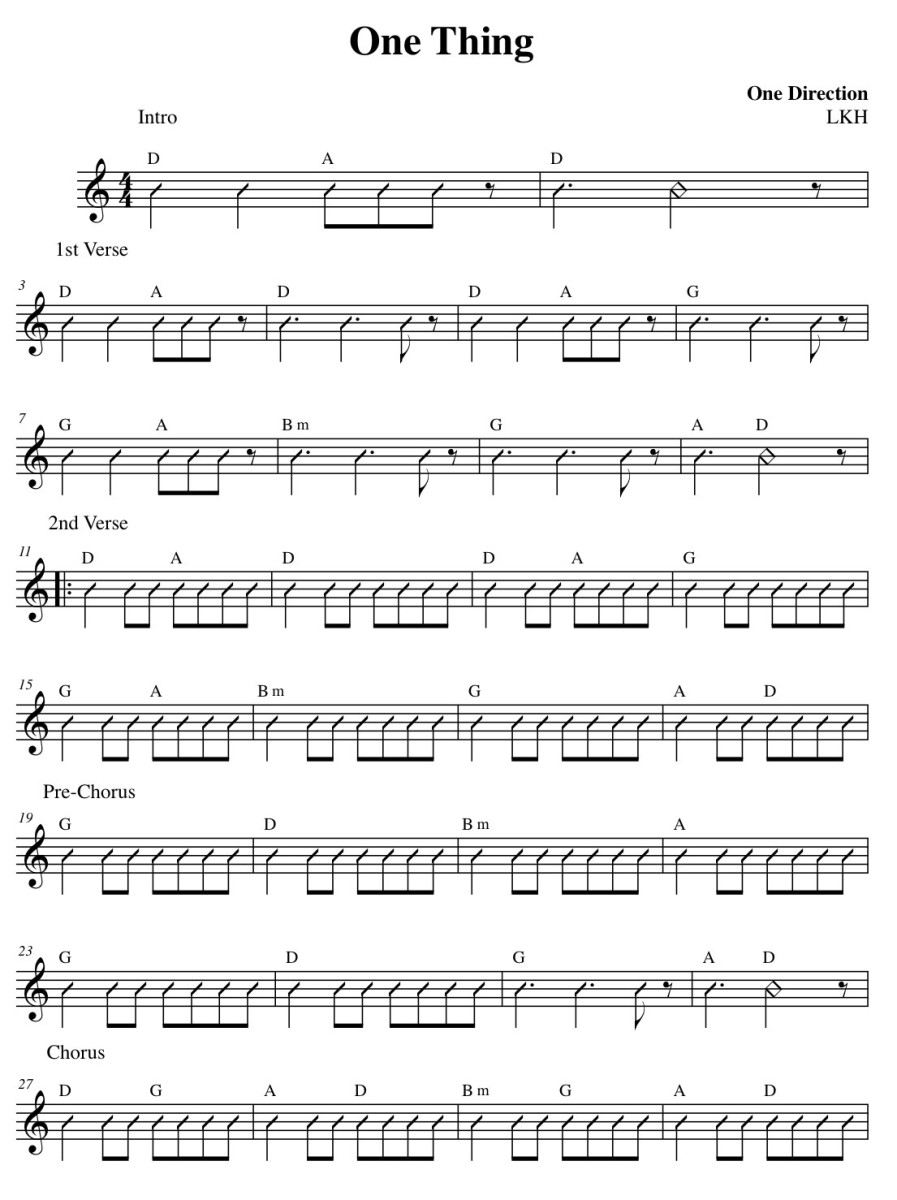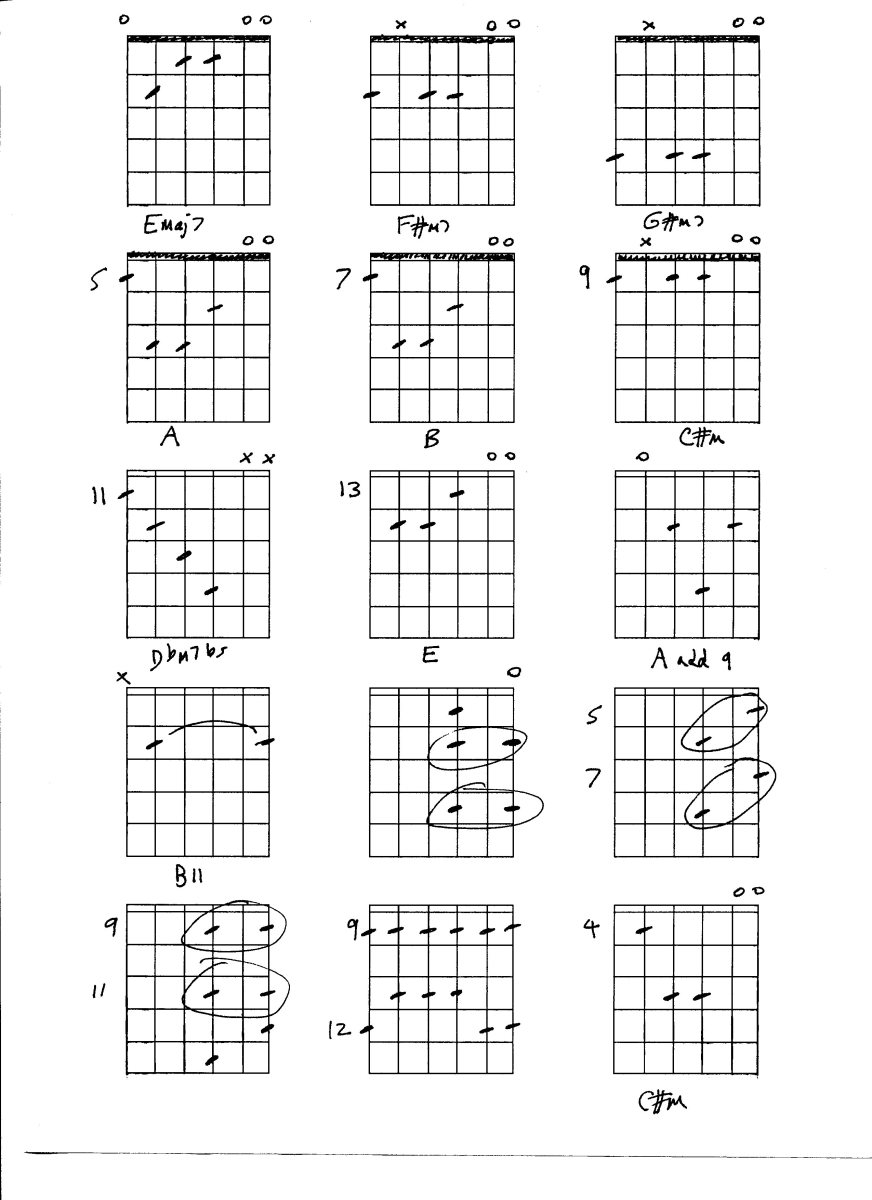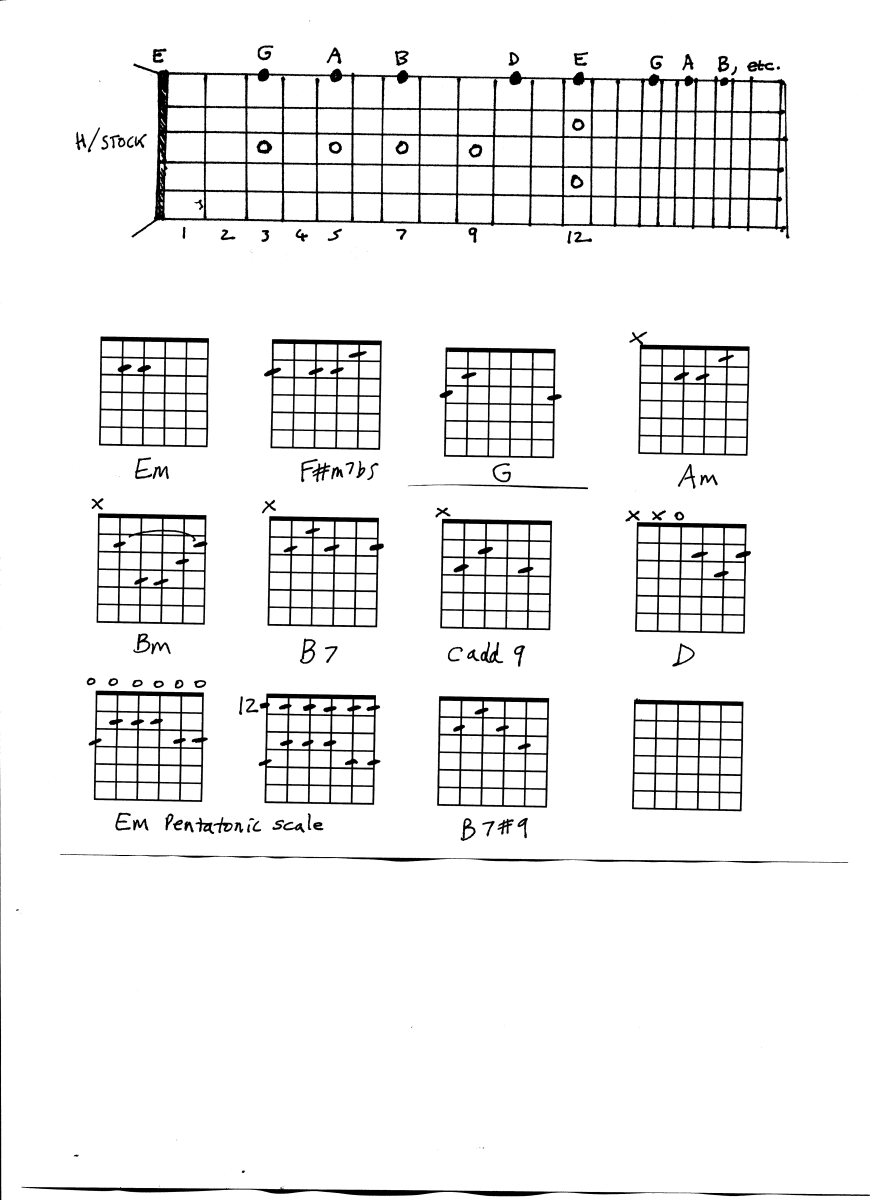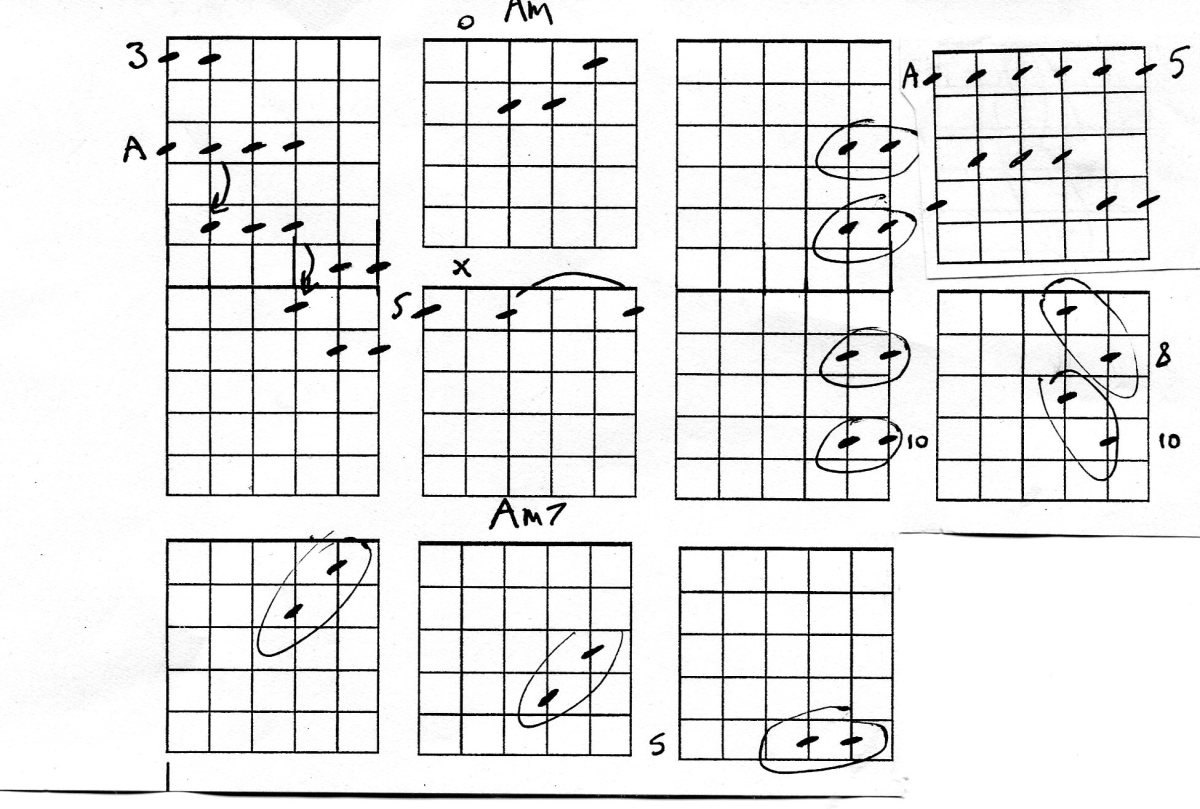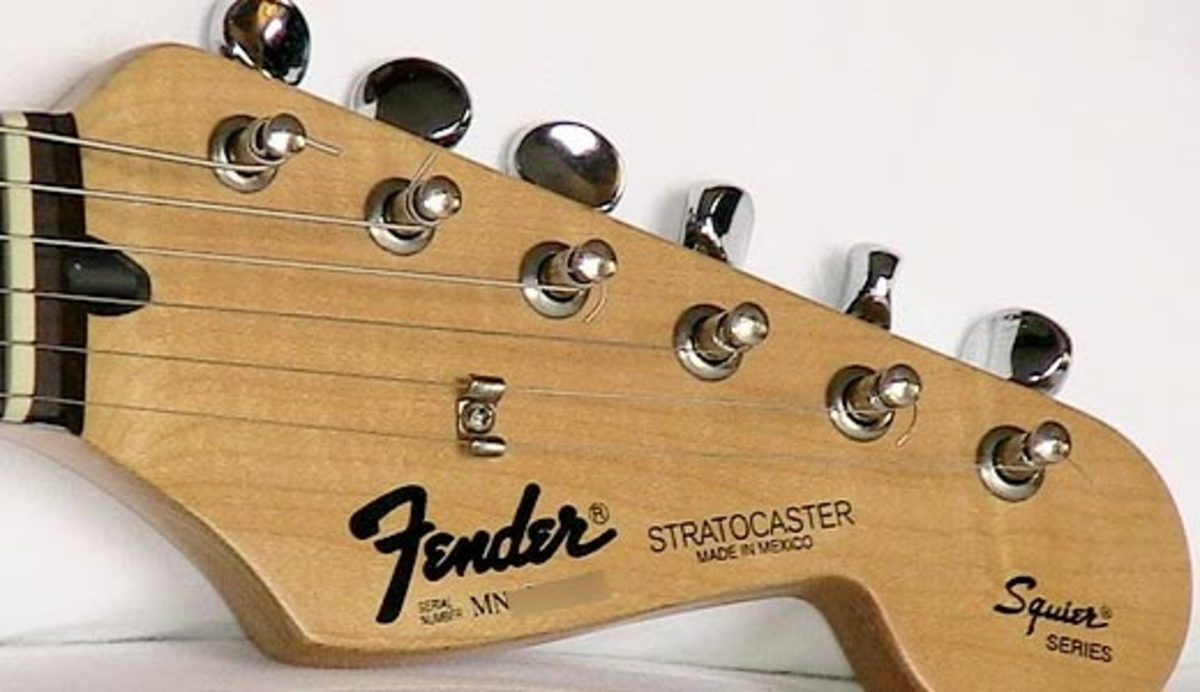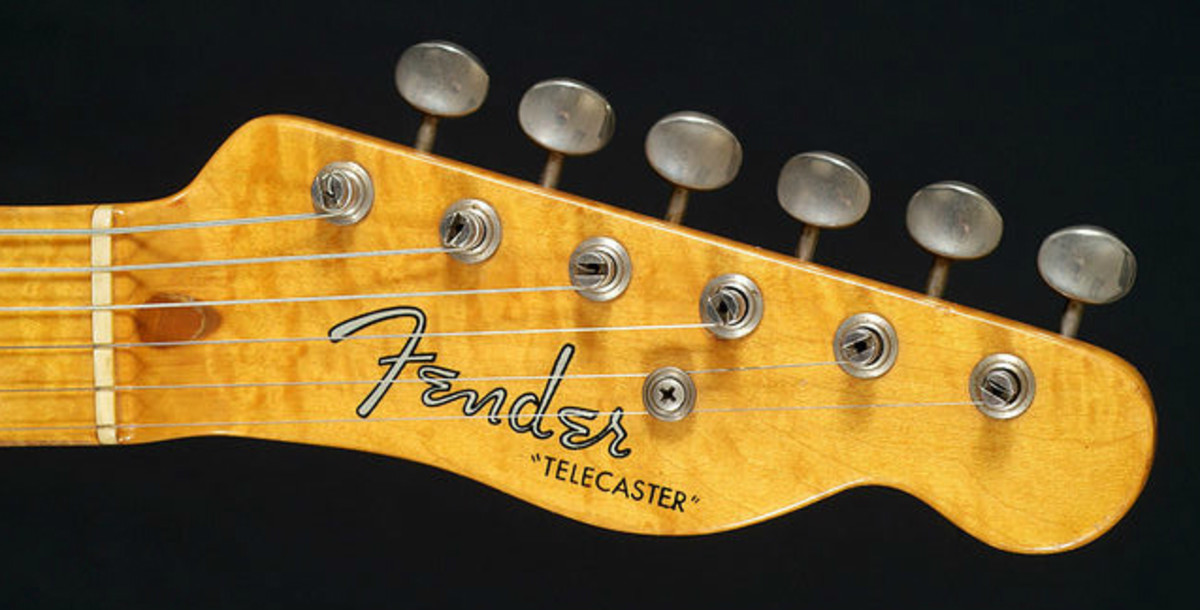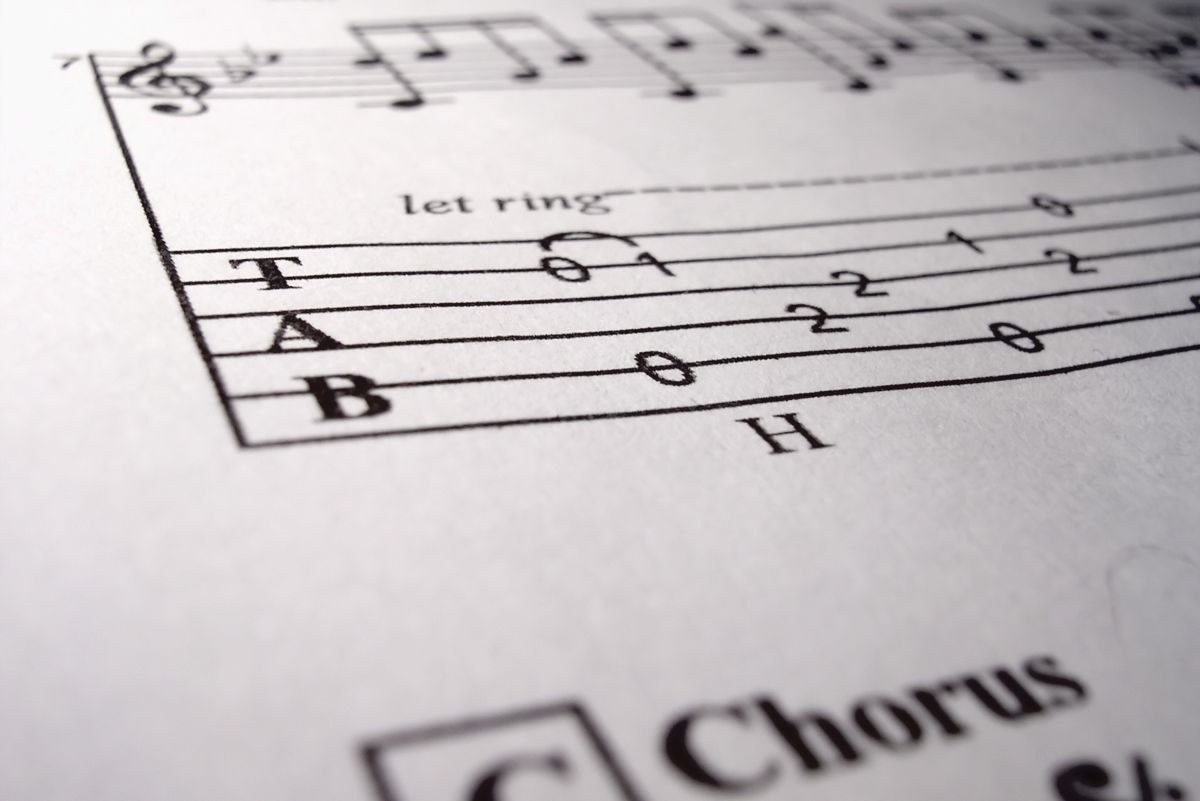Guitar Chords and Scales
Transferable shapes
I wish someone had shown me this stuff a very long time ago!
What I'm advocating here is to take one or two simple ideas and use them to the max. I'm not in love with theory per se, but I do like to save myself some work!
The guitar is interesting in that the tuning system on the bottom four strings, (that is strings 6,5,4,3 or the lowest in pitch) means that riffs, scales and chords can be transferred easily from one set of strings to the next set.
Example 1: Major scale pattern for G major can be shifted across one string to make the C major scale. Move everything up 2 frets and you have A and D major, up another 2 frets and you have B and E major, and so on up the neck.
So from one scale pattern shape we can easily get 24 major scales!!!
5 Shapes, or Power chords
The same thing applies with 5 chords, otherwise known as Power Chords. I find that classifying chords as to where the root note is really makes everything easier. Starting with G5 - a root 6 chord, fret 3 on string 6 is a G.
Fret 3 = G5 and C5 ( Root note on string 6, Root note on string 5)
- Fret 5 = A5 and D5 (Root 6 or Root 5)
- Fret 7= B5 and E5
- Fret 8= C5 and F5
- Continue up the neck to get all the other chords.
In the same way, one easy chord shape gives you 24 Power chords. Because we're effectively playing a I to IV chord progression, as used in real songs all the time, this is very useful practice. To get the V chord (most rock songs use I IV and V chords together) just move the IV chord up 2 frets. It will sound like La Bamba, Twist and Shout (virtually the same song!) and many other songs.
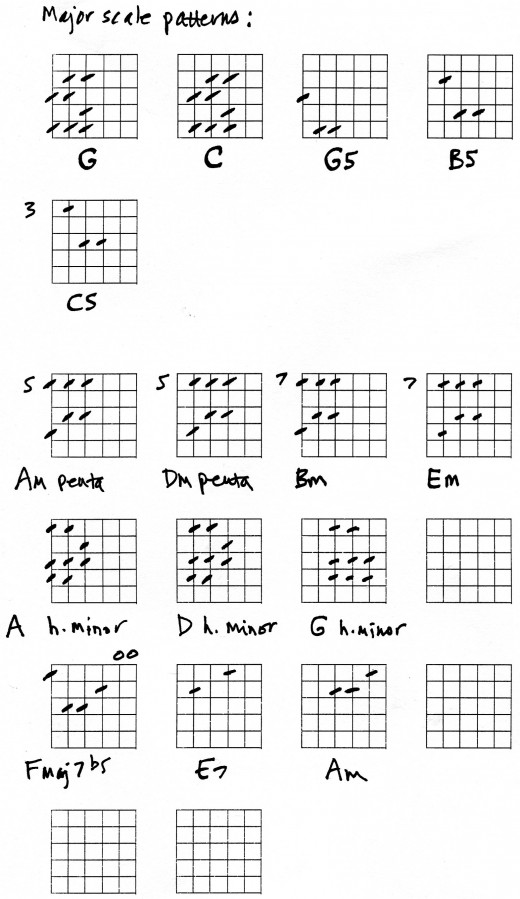
Pentatonic scales
Next example is Am pentatonic, which starts in fret 5 as that is an A - take it across one string and you have Dm pentatonic scale. Now the root note is on string 5, and fret 5=D.
Only one octave of the scale is shown, so that it's transferable. If you don't know the rest of the pattern, it's in my other hubs, or you could sing the notes and copy them on guitar.
You can move it up the neck for all the other pentatonic scales.
Notes on string 6: Fret 7 is B.
- Fret 8 = C
- Fret 10= D
- Fret 12= E
Notes on string 5: Fret 7 = E
- Fret 8 = F
- Fret 10 = G
- Fret 12 = A
Harmonic Minor scales
Use this pattern for harmonic minor scales, with the root note on string 6.
A Harmonic Minor. is shown, starting at fret 5.
When the pattern is moved across one string, you have D harmonic minor.
Move it across one more string, and the last part of the pattern changes slightly.
It's because that pesky string 2 is a different interval to the other strings.
Finally, here are some chords with a Spanish or flamenco sound that work well with the Am harmonic minor scale. Great for improvising.


